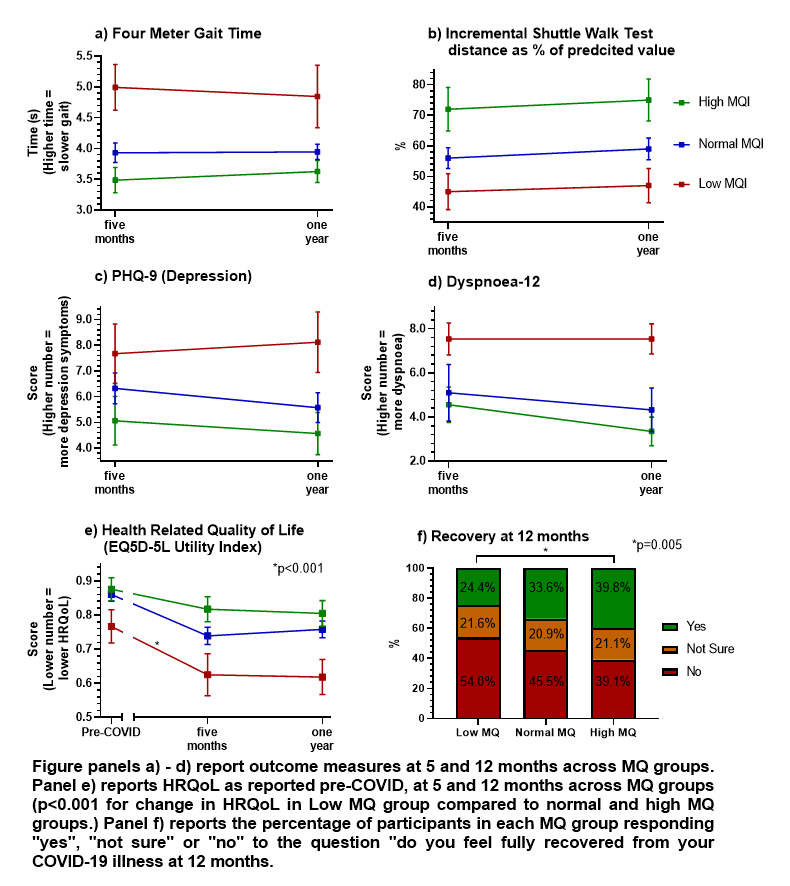Abstract
Background: Previous reports have described obesity as a major risk factor for non-recovery following hospitalisation for COVID-19.
Aims and objectives: To assess body composition differences between individuals who have either recovered or not following hospitalisation with COVID-19.
Methods: Adults hospitalised for COVID-19 across 35 UK sites were recruited. Body composition was assessed using either BIA or DXA 5 months after discharge. Whole body lean and fat mass values were combined from both modalities and regional body composition from DXA measures are reported. Self-reported recovery was recorded at 12 months.
Results: 835 participants were included with 208 undergoing DXA and 662 undergoing BIA. Mean(SD) age 58.7(12.7) years, BMI 31.5(6.68) kg/m2 and 39.6% were female. No difference was seen lean mass (fig a) or appendicular lean mass (fig d) among men or women reporting being recovered or not at 12 months. Non recovered women had higher mean(SD) total fat mass (41.4(16.8)kg vs 35.8(15.9)kg, p=0.006) (fig b) and mean(SD) core fat mass (21.5(7.49)kg vs 16.1(5.99)kg, p=0.002) (fig c) than those reporting recovery. These differences were not seen among men.

Conclusions: Detailed body composition ananlysis confirms obesity as a risk factor for non-recovery following hospitalisation with COVID-19 among women only while no difference in lean mass was seen between those who do and do not self-report recovery.